Professor James Lee
+44 (0)1904 322575
Email: james.lee@york.ac.uk
Atmospheric Chemistry
James Lee is research professor of atmospheric chemistry at the University of York and the National Centre for Atmospheric Science (NCAS), based in the Wolfson Atmospheric Chemistry Laboratories. He is also chair of the chemistry department net-zero working group.
![]()
Research interests
Research interests
Poor air quality, particularly in urban areas, has a demonstrable effect on human health, but the processes responsible for producing the main pollutants, namely particulate matter, ozone, nitrogen dioxide and heat are often not well understood and are poorly predicted.
One of the most important air pollutants is NOx (the sum of NO + NO2), which is emitted largely from traffic exhausts and has direct health effects, as well as being a precursor for photochemical ozone (O3) formation, one of the major constituents of ‘smog’. Despite advances in vehicle technology over the past 10-15 years, NOx levels in the UK (especially in cities) have remained stubbornly high.
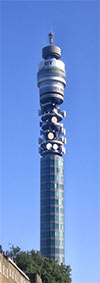
Professor Lee has led the development of techniques to make direct measurements of NOx flux from elevated site above central London (the BT tower), in Beijing and in Delhi and from aircraft flights over central London. These flux measurements have been compared to the emissions estimates, with the estimates typically under predicting the amount of pollutant emitted.
This work has helped improve these estimated emissions, which in turn should lead to improved predictions of current and future air quality and help to direct air pollution abatement.
Professor Lee has also carried out research into ozone formation pathways in different cities (eg London, Beijing, Delhi), in order to assess the key processes that lead to the formation of this secondary pollutant. This knowledge has then been used to assess the effect of future emission reductions on ozone formation, which do not follow each other linearly.
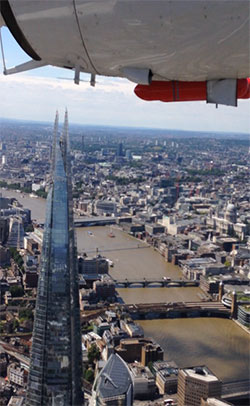
Research is also required into the atmosphere in more remote environments. The oxidation of methane, a potent greenhouse gas, occurs predominantly within the tropics owing to a combination of high water vapour and radiation which leads to high concentrations of hydroxyl radicals. High temperatures within the tropics enhance the oxidation of methane in this region with the result that ~75 % of methane oxidation occurs between 30°S and 30°N. Also, the production and loss of tropospheric ozone, again an important climate gas, is dominated by activity within the tropics, due to the high photochemical activity.
The Cape Verde Atmospheric Observatory (CVAO) is located at Calhau on a NW facing sandy beach on Sao Vicente, 16.848N, 24.871W, adjacent to the ocean (see picture below), with the prevailing trade winds blowing directly off the ocean.
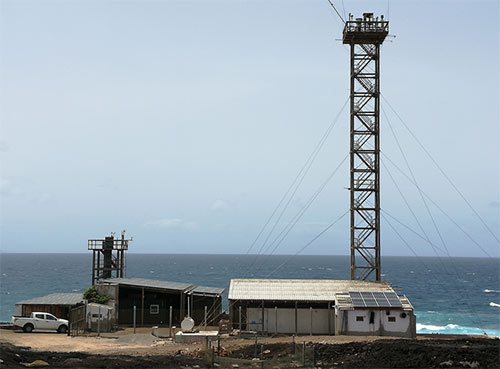
There are no obvious major coastal features such as extensive shallows or large seaweed beds. The Cape Verde atmospheric observatory was setup in October 2006 and has produced an almost complete 17 yeardataset of O3, CO, NO, NO2, NMHC’s, oVOC’s and basic meteorology since then.
Data shows a very clean environment, with airflow almost always from the clean North East sector. Back trajectories show air from Saharan Africa, coastal Africa or the North Atlantic. Noontime levels of NO are rarely above 10 pptv, with a noontime median of ~5 pptv. NO2 ranges from 5–100 pptv with a median of ~25 pptv, with clear influence of shipping traffic manifested in NO2 spikes. In such a remote environment, these trace quantities of NO and NO2 control the photochemical formation of O3.
This is important as the changing level of O3 in the background troposphere impacts the ability of countries downwind to achieve their air quality standards. In the northern hemisphere, emissions of NOx are dominated by anthropogenic sources from urban or industrial regions, with little or no emission from oceanic or uninhabited areas.
Oxidation of emitted NOx to nitric acid (HNO3), peroxyacetyl nitrate (PAN) and other alkyl nitrate compounds (collectively termed NOz) occurs in less than a day in the continental boundary layer, therefore NOx levels in remote regions are usually very low.
Research has been carried out at the CVAO to investigate whether these longer lived species can be recycled into NOx, thus affecting the O3 levels and how this could change in the future with increased emissions from Africa.
Professor Lee also makes use of the large UK atmospheric research aircraft (Facility for Airborne Atmospheric Measurements - FAAM), to investigate emissions and processing of pollutants in a variety of environments around the world. Recent work has included investigating the effect of wildfires in Africa on background ozone over the Atlantic ocean and examining emissions from shipping in open ocean and coastal water.
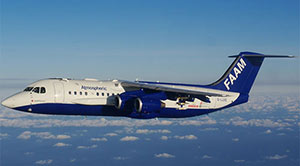
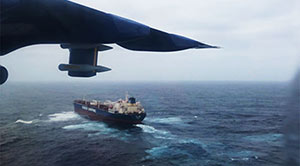
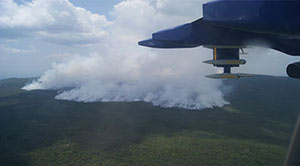
Career summary
Career summary
Professor Lee did his PhD on the measurement of atmospheric OH radicals at the University of Leeds, UK, followed by a post-doc implementing a new laser system to improve the measurements. He was then appointed to his current role within NCAS based in the Department of Chemistry, University of York, UK.
He has more than 20 years of experience in coordinating large measurement intensive field campaigns, both ground and aircraft based. He is an expert in tropospheric oxidation chemistry, including both measurements of gas phase pollutants and analysis and interpretation of the data.
He also has expertise in the direct measurements of emissions of air pollutants from both ground and airborne platforms using eddy covariance and has led development of data analysis techniques to apply this to urban environments.
His work has led to publications showing estimated emissions of NOx in London are significantly lower than those predicted from emission inventories, and he now leads a long term NOx emission measurement program at the BT tower in London. Recent work has also been carried out using similar measurements in Beijing and Delhi, helping to improve emission inventories in these cities.
He led work examining the response of UK air pollution to the COVID-19 lockdowns, showing that whilst NO2 reduced, O3 increased in many places. He leads the NOx measurement program at the Cape Verde Atmospheric Observatory and represents the UK on European and WMO expert groups on the subject.
He also leads UK airborne research flights in a wide range of environments worldwide including tropical rainforests, remote oceans, wildfires and developing megacities. He has over 200 peer reviewed publications and leads a group containing eight PhD students and four postdoctoral researchers.
Group
Postdoctoral researchers
- Sari Budisulistiorini
- Beth Nelson
- Will Drsydale
- Stuart Young
PhD students
- Maggie Alexiadou
- Anna Callaghan
- Sam Cliff
- Tom Moore
- Loren Temple
- Carys Williams
- Sam Wilson
Selected publications
Selected publications
- Pandemic restrictions in 2020 highlight the significance of non-road NOx sources in central London, S. J. Cliff et al., Atmospheric Chemistry and Physics, 2023, 23(4), pp. 2315–2330, doi: 10.5194/acp-23-2315-2023.
- Extensive field evidence for the release of HONO from the photolysis of nitrate aerosols, S. T. Andersen et al., Science Advances, 2023, 9(3), eadd6266, doi: 10.1126/sciadv.add6266.
- Eddy covariance measurements highlight sources of nitrogen oxide emissions missing from inventories for central London, W. S. Drysdale et al., Atmospheric Chemistry and Physics, 2022, 22(14), pp. 9413–9433, doi: 10.5194/acp-22-9413-2022.
- Ozone production and precursor emission from wildfires in Africa, J. D. Lee et al., Environmental Science: Atmospheres, 2021, 1(7), pp. 524–542, doi: 10.1039/D1EA00041A.
- In situ ozone production is highly sensitive to volatile organic compounds in Delhi, India, B. S. Nelson et al., Atmospheric Chemistry and Physics, 2021, 21(17), pp. 13609–13630, doi: 10.5194/acp-21-13609-2021.
- UK surface NO2 levels dropped by 42% during the COVID-19 lockdown: Impact on surface O3, J. D. Lee et al.,Atmospheric Chemistry and Physics, 2020, 20(24), pp. 15743–15759, doi: 10.5194/acp-20-15743-2020
Awards and activities
Awards and activities
- Member of the Global Atmospheric Watch (GAW) scientific advisory group on reactive gasses.
- Chair of the FAAM gas phase chemistry instrumentation working group.
- Member of the FAAM Mid Life Upgrade project board.

